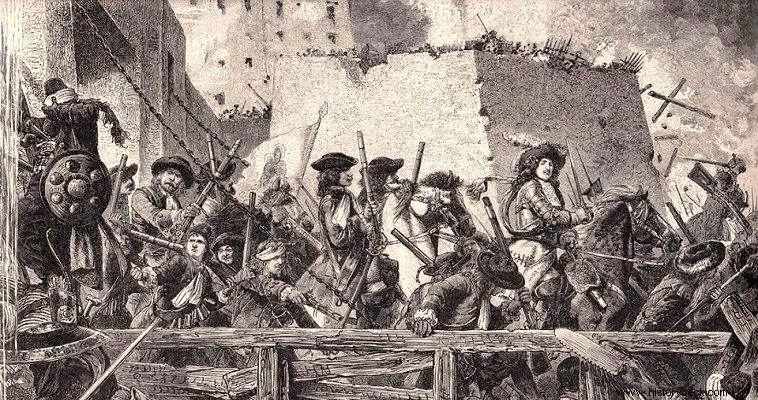
Count Ernst Riediger von Stareberg proved to be the right man in the right place. He was a fearless and tireless soldier who managed to hold Vienna against the Turkish hordes who outnumbered his forces 10:1.
von Stareberg was a descendant of a military family. His cousin Guido was one of the best generals of the Habsburgs. Ernst was born in 1638 in Graz, Styria. At a young age he fought against the French and the Turks under the great general Raimondo Montecucoli. In these campaigns he learned the art of war.
In 1680 Stareberg was appointed military commander of Vienna. It was a wise choice. Three years later a huge Turkish army of 200,000 men, under the grand vizier Kara Mustafa appeared before the Austrian capital.
Stareberg had less than 15,000 men. He also gathered about 9,000 volunteers from the able-bodied citizens. Nevertheless, he flatly rejected Kara Mustafa's proposal to surrender the city. After that, the siege began, on July 14, 1683. Stareberg proved to be the soul of the defense.
Before the beginning of the siege he had ordered the demolition of all the buildings outside the walls and the cutting of the trees so that the Turks could not take cover anywhere. Due to the age of the walls, he ordered their reinforcement with trunks of large trees, some of which were buried in the ground.
In this way the walls were also supported and the attempts of the Turks to open arcades under the walls to undermine them were delayed for three crucial weeks. Thus time was gained for the gathering of Christian forces to lift the siege. He himself took drastic measures inside. Whatever purpose he was asleep for was immediately carried out!
In this climate Stareberg held the city despite the fact that there was a shortage of food. The Turks made their last attempt, shortly before the arrival of the liberating Christian forces, by blowing up part of the walls and creating cracks. The defenders, always led by Stareberg, reacted with firecrackers. Nevertheless, the Turks, on September 8, managed to take over part of the fortification.
Stareberg ordered the creation of new fortifications, internally, to face any Turkish incursion into the city. The wall battles continued in the following days with Stareberg everywhere, encouraging, threatening, ordering. But soon salvation arrived.
Fires from Kaleberg Hill alerted the besieged that the liberating force had arrived. On September 12 the Christian army of 80,000 Austrians, Germans and Poles marched against the Turks, crushing them. Stareberg did not remain a spectator of the battle but made an exit with his forces, exacerbating the panic of the Turks.
For his heroic defense of Vienna he was promoted to marshal. After the city was saved, he participated in the Austrian counter-attack against the Turks. During the siege of Buda, in 1686, he was seriously wounded and retired. In 1691, however, he was appointed president of the Imperial War Council (Minister of Defense) and was entrusted with the responsibility of reorganizing the armed forces of the Habsburg Empire.
He died in 1701 at the age of 62 when a new war broke out with France (War of the Spanish Succession). Stareberg is not unjustly still honored in his birthplace, as the savior of Europe and European culture from Turkish obscurantism and barbarism. And indeed the picture of our world would be very different today if the Turks had taken over Vienna.
